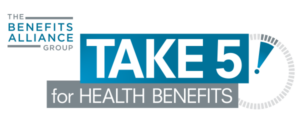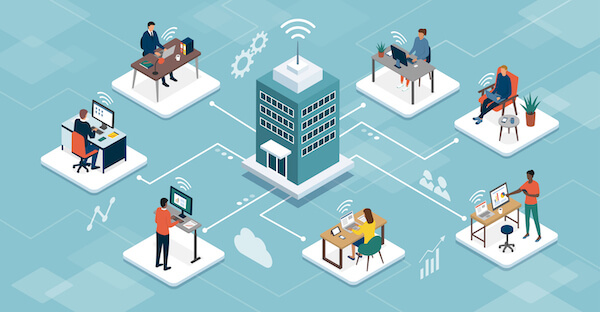The pandemic may have forever changed the nature of office work. Employees and employers alike are extolling the advantages of working from home (WFH)—so far at least. Not only do many employees state a preference for WFH at least some of the time after the pandemic, but employers also are literally not signing on the dotted line.
“The cost of commercial rent in certain regions can be so high that most of the employers I work with have had serious conversations about the actual need for any or all of their office space. Some have not renewed their leases or have started subletting,” says Jason Fleming, principal founder of Maxton Human Resources, a Toronto-based human resources consulting firm specializing in crisis management.
He emphasizes that remote or flexible work arrangements will become the latest staple item in the HR pantry for attraction and retention, especially in the highly competitive worker talent market. “Employers that took pride in their modern and attractive physical office spaces were among the first to say that their employees can now work remotely permanently. This evolution happened very quickly,” he notes.
In fact, both he and Candace Giesbrecht, director of the REMOTE PERFORMANCE ACADEMY at Teamit, were helping employers create sustainable WFH or hybrid work arrangements—also referred to as “distributed workforces”—since well before 2020. As we’ve seen in many other areas (think virtual healthcare), COVID-19 has accelerated trends that were already underway.
Here are key considerations as you determine how WFH will unfold in your organization.
What numbers are we talking?
Approximately two out of three workers worked from home or outside of the office/workplace since the start of the pandemic, reports LEGER in its latest “Returning to Work” poll released on May 31. Of those, 78% prefer to continue a WFH arrangement after the pandemic versus 20% who would prefer to go back to the office every day. Only 2% do not know their preference.
Here’s how that 78% breaks down:
- 40% would like to work from home up to a few days each week;
- 19% would like to go into the office/workplace only when needed, once or twice a month;
- 19% would like to work entirely from home.
When you bring back the one-third of surveyed workers who never worked remotely during the pandemic, we arrive at about half of the total workforce stating a desire to work from home, in some capacity, after the pandemic.
Of note, 35% of WFH proponents agreed that if their employer ordered them to return to the office, they would start to look for another job where they can work from home.
Process ahead of place
When it comes down to it, the main components to get work done are people, place and process. COVID-19 shone a disruptive light on place, but we should not put too much weight on that piece. “Research going back more than a decade shows that process is twice as impactful as place in terms of productivity and engagement. And the people aspect is four times as impactful as place,” says Giesbrecht.
She adds that, for employers thrown into WFH arrangements during the past year, it’s too soon to make judgements. “During a pandemic, remote work is not going to work well for everyone. But you don’t want to throw the baby out with the bath water.”
Now is the time to step back and focus on process and people. “Which processes will help our people be more efficient and productive? And then be attentive to how people are doing for work-life balance. Flexibility is key,” she summarizes.
On the process side, a common misstep is to replace face-to-face communications with the virtual equivalent, i.e., video calls. Instead, asynchronous communications are key for efficiency as well as a sense of easy connection. “Ensure that people can pop into a virtual whiteboard or a shared document. It’s like popping into an office,” says Giesbrecht.
The process piece also requires easy access to information, so that workers at home aren’t bothering those at the office. “In the early days one client redeployed an admin staff to be the office runner, to get files, etc.,” recalls Giesbrecht. “Eventually this person began the process of putting files on the Cloud, and now they are looking to hire a student to finish building this virtual infrastructure.”
Connection and culture
In research circles, “affinity” is a term applied to the people piece of the equation. Affinity describes the relationships between team members. Accessible, supportive and purposeful leadership is prerequisite for positive affinity.
For an increasingly distributed or hybrid workforce, new leadership skills are required. “For example, we know that remote workers are less likely to reach out for help. Therefore it is important for leaders to have a process in place for more frequent, proactive one-on-ones,” advises Giesbrecht.
Workplace culture, or a shared system of values and behaviours, is the engine that drives successful affinity. “In an environment of uncertainty and changes, purpose and values made a big difference,” noted a 2020 REPORT by Habanero. “Organizations that invested in their culture over the years reaped the rewards of that work during COVID.”
Last but not least, employee input is essential. “Ask how things are going in terms of people, process and place. So much of our work paradigm is changing and their input is vital both to maintain loyalty and to plan for the future,” emphasizes Giesbrecht.
Put it in writing
It perhaps goes without saying that a WFH policy is needed to communicate what’s acceptable and expected. However, employers should not feel pressured to set things in stone. “Make decisions for the next few months or until 2022,” suggests Giesbrecht. “The main thing is to provide clarity to employees.”
A new compensation policy may also be in order to address compensation for employees distributed across a wider geographical space. “Engage a compensation consulting firm to establish a plan for regional wage differentials,” recommends Fleming. Using government and other publicly available data, such as housing costs, the wage differential applies an objective lens for hiring and wage reviews. “Be sure to monitor and adjust on an ongoing basis,” adds Fleming.
Getting comfortable
Savings from reduced office space can be applied to support ergonomically sound workstations at home. “You want to minimize the risk of physical harm to employees while working at work or at home, which can lead to benefits costs down the road,” says Fleming.
However, that may be tough to scale for larger workforces. “What I’m seeing as more of the norm is a larger focus on education about ergonomics. Some employers are sending home-office ‘workstation kits’ to employees to maximize productivity and comfort while working remotely, and that could eventually lead to supplying an office chair, or a computer screen. It’s all about keeping your employees healthy and remaining competitive as an employer. You need to meet or lead the market to compete for talent,” explains Fleming.
Prepare for conflict
A significant number of employees will be returning to the office, at least part-time, after more than a year away. Reunions may not all go well.
“COVID-19 has introduced many new challenges in employee relations,” notes Fleming. Depleted resilience and poorer mental health likely first spring to mind as factors that could negatively impact interactions. However, perhaps equally important are psychosocial factors that influence behaviour, such as political beliefs and lived experiences.
“Opinions are strong about the lockdowns. Some people are convinced that COVID-19 is a hoax, while others have lost a family member to it. They will be riding elevators together and sharing lunchrooms again soon. Employers should be prepared for more interpersonal conflict than ever,” suggests Fleming.
Remain on guard
As an expert in crisis management, Fleming cautions against applying a “binary” approach to decision-making.
“We tend to think and speak in terms of normal-life and COVID-life. Many are assuming there will be a ‘hard-stop’ to the pandemic. I don’t believe this will be the case. If there is one thing we’ve learned in the past 15 months, it’s that we can’t predict how this pandemic will evolve. We need to prepare for a middle ground that is something in between normal life and COVID-life, potentially for quite a while,” he advises. For example, local spikes of COVID-19 cases could require intermittent returns to full-time remote work for all office staff.
As well, public health measures will evolve for some time yet. Employers need to remain compliant and communicative with their workforce, and continuously refine their COVID-19 response strategy.
Under the direction of an internal, cross-functional team (including representation from HR, legal and operations), “there has to be a commitment and a cadence for the ongoing assessment of external developments and translating those developments into policies and plans,” states Fleming.
Employers need to remain vigilant—or get vigilant. “Many employers are still not comfortable managing COVID-19 in the workplace. They keep hoping for the best and waiting for the pandemic to be over. That’s not good enough. This is a huge human resources challenge, it’s exhausting, but we can’t let down our guard,” emphasizes Fleming.
Circling back to attraction and retention, it’s probably fair to say that the coming months will be a litmus test for employers. Fleming explains it simply: “The way that you handle COVID-19 and the return to the workplace will be representative of the value you place on your employees. They will remember this and it will impact your employer brand.”
 This article is part of The Benefits Alliance Take 5 for Health Benefits. Take 5 is a quarterly initiative that provides a deeper look a the employee benefits space by providing examples, research and case studies on what’s working for employers in Canada.
This article is part of The Benefits Alliance Take 5 for Health Benefits. Take 5 is a quarterly initiative that provides a deeper look a the employee benefits space by providing examples, research and case studies on what’s working for employers in Canada.
